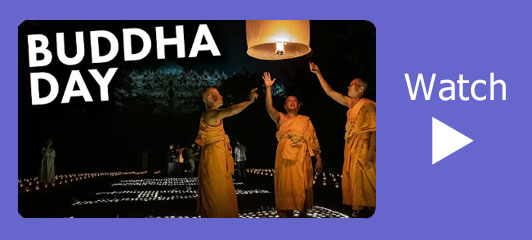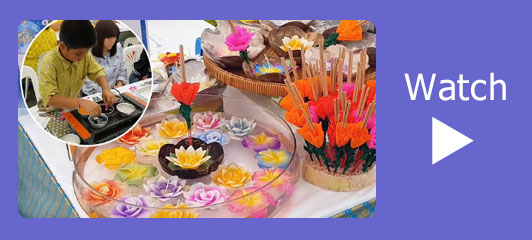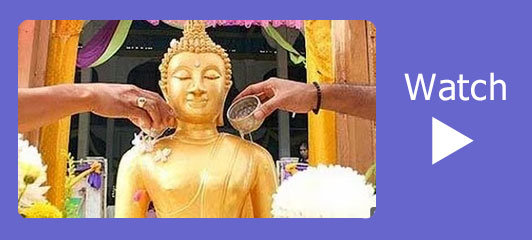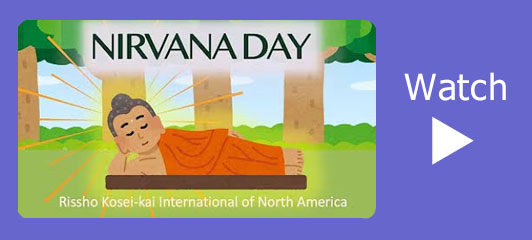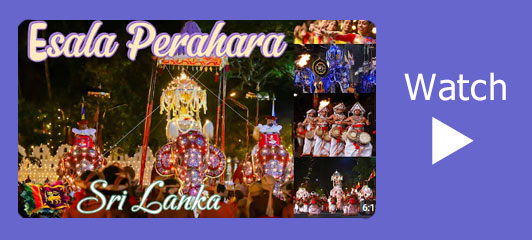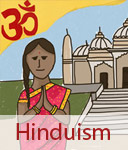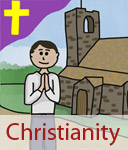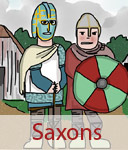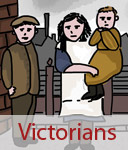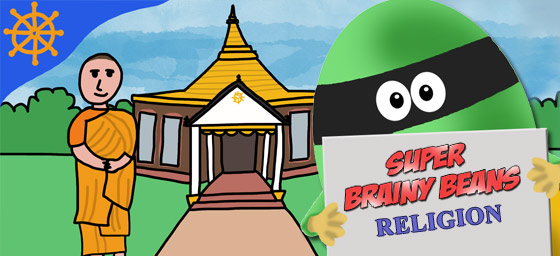
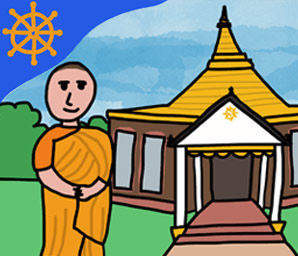
Buddhism for kids
Buddhism for kids in Primary Learning. Homework help with what Buddhism is, how Buddhists worship and what their holy festivals and traditions are.
What is Buddhism?
Buddhism began in India over 2,500 years ago, when a man named Siddhattha Gotama (often called the Buddha, which means “the Enlightened One”) taught people how to live a good and peaceful life.
Buddhists don’t believe in a single God who created the world. Instead, they follow the Buddha’s teachings about kindness, wisdom, and compassion. Today, there are three main groups of Buddhists:
- Theravada Buddhism (found in Sri Lanka, Thailand, and other parts of Southeast Asia)
- Mahayana Buddhism (found in China, Japan, and Korea)
- Vajrayana Buddhism (found in Tibet and Mongolia)
 What is Buddism?
What is Buddism?Buddhism started in India over 2,500 years ago. Buddhists follow the teachings of a man called Siddhattha Gotama.
 Britannica Kids - Buddhism
Britannica Kids - BuddhismMore information on Buddhism and their way of life and beliefs.
What is the symbol of Buddhism?
 The most common symbol of Buddhism is the Dharma Wheel (or Dharmachakra). The wheel usually has eight spokes, which stand for the Noble Eightfold Path – the Buddha’s guide to living a good life. The wheel reminds Buddhists to keep moving forward on their spiritual journey, just like a wheel keeps rolling.
The most common symbol of Buddhism is the Dharma Wheel (or Dharmachakra). The wheel usually has eight spokes, which stand for the Noble Eightfold Path – the Buddha’s guide to living a good life. The wheel reminds Buddhists to keep moving forward on their spiritual journey, just like a wheel keeps rolling.
Another important symbol is the lotus flower. This beautiful flower grows in muddy water, but rises above it clean and pure. It reminds Buddhists that people, too, can rise above difficulties and become wise and good.
Buddhist beliefs
Buddhists believe that everyone wants to be happy, but suffering exists because people can sometimes be selfish, greedy, or unkind. By following the Buddha’s teachings, Buddhists believe they can overcome suffering and find peace.
Some key Buddhist beliefs are:
- No harm: Do not harm any living thing – many Buddhists are vegetarians because they respect all forms of life.
- Kindness: Show compassion, even when you’re upset or in a bad mood.
- Reincarnation: When someone dies, they are born again. This cycle continues until they reach Nirvana, a state of perfect peace and freedom.
Buddhists also follow:
- The Three Jewels (or Refuges): The Buddha (the teacher), the Dharma (the teachings), and the Sangha (the Buddhist community).
- The Noble Eightfold Path: Eight steps to live wisely and kindly, such as right speech (speaking truthfully) and right action (doing good things).
- The Five Precepts (promises): Do not harm living things, do not steal, be faithful, speak truthfully, and avoid drugs or alcohol.
How do Buddhists worship?
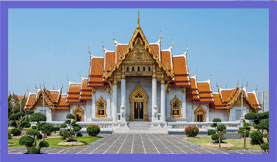 The BuddhaBuddhists worship in many peaceful and thoughtful ways, both at home and in temples. Worship helps them to show respect for the Buddha and to practise his teachings of kindness, mindfulness, and peace.
The BuddhaBuddhists worship in many peaceful and thoughtful ways, both at home and in temples. Worship helps them to show respect for the Buddha and to practise his teachings of kindness, mindfulness, and peace.
At home
Many Buddhist families have a small shrine in their home. This is a special place for quiet thinking and prayer. The shrine usually has a statue or picture of the Buddha, candles, flowers, and incense sticks.
Offerings such as fresh fruit, rice, or water are placed in front of the shrine to show respect and gratitude. These offerings are not for the Buddha to eat, but are a symbol of thankfulness and the wish to live a good life.
At the temple
Buddhist temples are beautiful, calm places for worship and meditation. Before entering, Buddhists remove their shoes to keep the temple clean and to show respect.
Inside, the main hall (called a shrine room) often contains a large statue of the Buddha sitting cross-legged, surrounded by candles, flowers, and incense. These items remind Buddhists of the Buddha’s wisdom, the beauty of his teachings, and the shortness of life — just like flowers that bloom and fade.
Temples come in many different styles around the world:
- In Thailand and Sri Lanka, temples often have bright golden roofs and tall towers.
- In Tibet, temples are decorated with colourful prayer flags fluttering in the wind.
- In Japan, Buddhist temples are often surrounded by peaceful gardens and ponds.
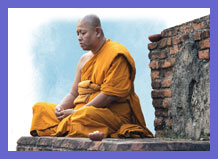 Monks and nuns live and work at the temple, spending their days studying, meditating, and teaching others. Visitors may listen to chanting, light incense, or sit quietly to meditate.
Monks and nuns live and work at the temple, spending their days studying, meditating, and teaching others. Visitors may listen to chanting, light incense, or sit quietly to meditate.
Meditation
Meditation is one of the most important parts of Buddhist worship. Buddhists meditate to calm their minds, develop kindness, and gain wisdom. They might sit quietly with crossed legs, focus on their breathing, or repeat peaceful words or phrases called mantras.
Meditation can be done alone, with family, or in a group at the temple. It helps Buddhists to live more mindfully — being aware of their thoughts and actions so they can show compassion to all living things.
- Some Buddhist temples have giant bells or gongs that are struck before meditation begins to help everyone focus and find peace.
- Many temples have a stupa (a tall, dome-shaped structure) or a pagoda (a tower with many levels). These are special places that often contain sacred relics or writings about the Buddha’s life.
- The holiest shrine in Buddhism is at Bodh Gaya in India, where the Buddha became enlightened while meditating under the Bodhi Tree. Monks and visitors still gather there today.
 Buddhism for kids
Buddhism for kidsA source for Buddhist facts, activities and books for children of all ages.
Buddhist Ceremonies
New baby
When a Buddhist baby is born, the family often takes the baby to a temple to be blessed by monks. The monks chant prayers to bring happiness, health, and good fortune to the child. The parents may also pour water over the baby’s hands or offer flowers and candles at the shrine to show their thanks for new life. In some countries, a small thread may be tied around the baby’s wrist for protection and blessings. This ceremony reminds families to raise their children with kindness and respect for all living things.
Poi Sang Long
The Poi Sang Long is a very special Buddhist ceremony celebrated mainly in Thailand and Myanmar. It marks the time when young boys (usually aged 7–14) become novice monks for a short period, often during the school holidays. Before joining the monastery, the boys take part in colourful parades dressed like princes, wearing gold robes and crowns to remember the Buddha’s life before he gave up luxury.
After the parade, they shave their heads, put on simple orange robes, and begin living in a monastery. There, they learn about the Buddha’s teachings, practice meditation, and help with daily temple tasks. The festival teaches children discipline, respect, and compassion, and is a joyful celebration for the whole community.
Funerals
Buddhists believe in reincarnation – the idea that after death, a person is reborn into a new life. Because of this, Buddhist funerals are usually calm and respectful rather than sad. The focus is on helping the person’s spirit move peacefully to its next life.
The body is usually cremated, not buried, and the ashes may be placed in a temple, shrine, or special urn. Monks chant prayers and family members bring offerings, such as flowers and incense. People also meditate and reflect on how short life is, remembering to live kindly and peacefully. In some countries like Sri Lanka and Thailand, families continue to pray for the loved one for several days after the funeral to wish them a good rebirth.
Who is the Buddha?
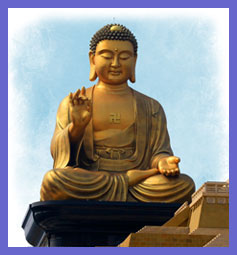 The Buddha was born as Siddhattha Gotama (also known as Siddhartha Gautama) in northern India over 2,500 years ago, around 500 BC. He was a prince who lived in a beautiful palace, surrounded by comfort and luxury. However, when he went outside the palace for the first time, he saw people who were old, sick, and poor, and he realised that life was full of suffering.
The Buddha was born as Siddhattha Gotama (also known as Siddhartha Gautama) in northern India over 2,500 years ago, around 500 BC. He was a prince who lived in a beautiful palace, surrounded by comfort and luxury. However, when he went outside the palace for the first time, he saw people who were old, sick, and poor, and he realised that life was full of suffering.
Siddhattha wanted to find out why people suffer and how they could find true happiness. So, he left his palace, gave up his riches, and spent many years travelling, learning from wise teachers, and meditating. One day, while sitting under a Bodhi tree in a place called Bodh Gaya, he finally reached enlightenment – a deep understanding of truth, peace, and the way to end suffering.
From then on, he was known as the Buddha, which means “The Enlightened One.” He spent the rest of his life teaching others the path to peace and happiness, known as the Middle Way, which avoids both extreme luxury and extreme hardship.
The Buddha’s teachings spread across India, Sri Lanka, China, Japan, Thailand, and many other countries, and today, millions of people around the world still follow his wisdom about kindness, mindfulness, and compassion.
What is the Dhammapada?
The Dhammapada is one of the most famous and loved books in Buddhism. It is a collection of more than 400 verses, containing the wise sayings and teachings of the Buddha about how to live a good and peaceful life. The verses talk about kindness, honesty, patience, wisdom, and compassion, guiding Buddhists on how to bring happiness to themselves and others.
The Dhammapada also includes Jataka stories – tales about the Buddha’s past lives before he became enlightened. In these stories, the Buddha is often born as an animal or a person who faces challenges but always chooses to do what is right. These stories are told to children and adults to teach lessons about being honest, generous, caring, and brave.
Even today, Buddhists all over the world read or listen to the Dhammapada to inspire good behaviour and peaceful thoughts in their daily lives.
Monks & Nuns
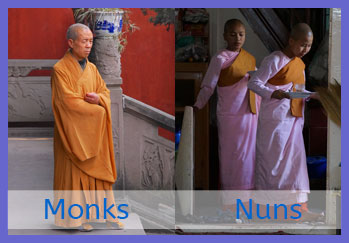 Some Buddhists choose to become monks (men) or nuns (women). This means they devote their lives to learning, practising, and teaching the Buddha’s message of peace, wisdom, and compassion. Monks and nuns live very simple lives so they can focus on what is truly important — being kind, thoughtful, and helping others.
Some Buddhists choose to become monks (men) or nuns (women). This means they devote their lives to learning, practising, and teaching the Buddha’s message of peace, wisdom, and compassion. Monks and nuns live very simple lives so they can focus on what is truly important — being kind, thoughtful, and helping others.
They live in special places called monasteries or temples. These are quiet, peaceful communities where everyone shares their work and supports one another. Each day, monks and nuns meditate, chant prayers, study sacred texts, and teach people about Buddhism. They also help the local community, offering guidance and kindness to anyone in need.
Monks and nuns wear special robes, often coloured orange, red, or brown, depending on the country and tradition. These robes remind them to live humbly and without greed. They usually shave their heads as a sign of simplicity and equality — showing that everyone is the same, no matter what they look like.
In some Buddhist countries, such as Thailand, Myanmar, and Sri Lanka, it is common for young boys to spend a few weeks, months, or even years living as novice monks. During this time, they learn important lessons about discipline, respect, kindness, and meditation. Families see this as a great honour and a valuable way for children to grow in understanding and goodness.
Buddhist Festivals
Wesak (Vesak)
Wesak is the most important festival for Buddhists around the world. It celebrates three key events in the Buddha’s life – his birth, enlightenment, and death – which all happened during the full moon in May. During Wesak, temples are beautifully decorated with flowers, lanterns, and colourful flags. People bring offerings of food, candles, and incense to show their respect for the Buddha. Many Buddhists also bathe statues of the Buddha in scented water to remind themselves to keep their thoughts pure and kind. Families visit temples, listen to monks’ teachings, and take part in processions carrying lanterns to celebrate the light of wisdom spreading across the world.
Loy Krathong
Loy Krathong, known as the “Festival of Floating Boats,” is one of the most magical Buddhist celebrations, especially in Thailand. It takes place on the night of the full moon in November. People make small floating boats called krathongs, decorated with flowers, candles, and incense sticks. These are placed on rivers, lakes, and ponds, where they float away, lighting up the water. This festival is a way to thank the water goddess for providing life and to let go of anger, worries, and bad feelings. Watching thousands of glowing boats drift across the water is a beautiful and peaceful sight.
Songkran
Songkran is the Buddhist New Year, celebrated in Thailand, Laos, and Cambodia, usually in April. It is a joyful and lively time when people splash water on each other in the streets, which symbolizes washing away the old year and welcoming a fresh start. Many families also visit temples to make offerings, clean Buddha statues, and pour water gently over the hands of older relatives as a sign of respect and good wishes. It’s both a fun festival and a reminder to begin the new year with kindness and forgiveness.
Nirvana Day
Nirvana Day is a more quiet and thoughtful festival celebrated by Buddhists to remember the day the Buddha passed away and reached Nirvana, a state of perfect peace and freedom from suffering. On this day, Buddhists meditate, listen to sermons, and reflect on the Buddha’s teachings about life, death, and compassion. They might also visit temples or spend time helping others to remember the importance of kindness and peace.
Perahera Festival
The Esala Perahera Festival is one of the oldest and grandest Buddhist festivals, held every summer in Kandy, Sri Lanka. It celebrates the Sacred Tooth Relic of the Buddha, which is kept in the Temple of the Tooth. During the festival, the relic is carried through the streets in a magnificent procession with elephants dressed in colourful cloths, drummers, dancers, torch-bearers, and monks. Thousands of people gather to watch and offer prayers. The Perahera shows devotion to the Buddha and celebrates Sri Lanka’s deep Buddhist traditions.
Famous Buddhists
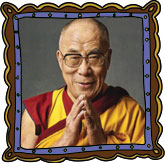
Dalai Lama (1935– )
The Dalai Lama is the spiritual leader of Tibetan Buddhists and one of the most respected figures in the world. He teaches people about peace, kindness, compassion, and forgiveness. The Dalai Lama travels to many countries to share the Buddha’s message and encourage everyone to live with love and respect for others. Even though he had to leave his homeland of Tibet, he continues to work for peace and understanding between all people. He won the Nobel Peace Prize in 1989 for his efforts to promote non-violence and harmony.
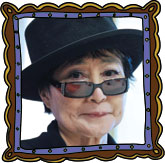
Yoko Ono (1933– )
Yoko Ono is a Japanese artist, musician, and peace campaigner who follows Buddhist ideas. She has spent her life encouraging people to live peacefully and show love and respect for others. Yoko worked with her husband, John Lennon, from The Beatles, to promote world peace — together they became famous for their “Bed-Ins for Peace.” Today, she continues to support art projects and charities that help people in need, spreading the Buddhist message of compassion and creativity.
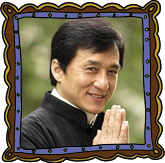
Jackie Chan (1954– )
Jackie Chan is a world-famous martial artist and actor from Hong Kong. He is known for his exciting action movies and amazing stunts. Jackie is a Buddhist who believes strongly in kindness, respect, and helping others. He often talks about how Buddhist teachings have guided his life and career, reminding him to stay humble and to use his success to do good. He has given millions of dollars to help children, hospitals, and people affected by natural disasters.
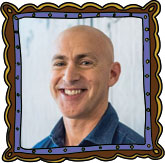
Andy Puddicombe (1972-)
Andy Puddicombe is a British author and meditation teacher, and the co-founder of the popular Headspace app, which helps millions of people learn to meditate. When he was younger, Andy travelled to Asia and spent ten years training as a Buddhist monk in countries like Myanmar and India. After returning to the UK, he decided to share what he had learned with others. Through his books and app, he teaches people how to use mindfulness and meditation to feel calmer, happier, and more focused.


